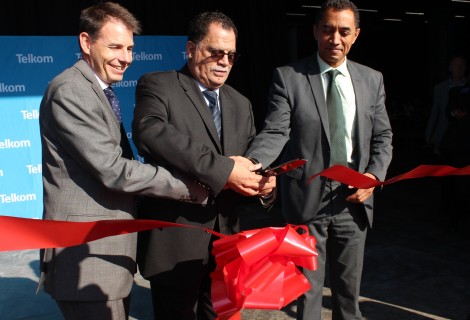Microalgae-to-Energy project launch
Innovative algae technology that could turn millions of tons of waste coal dust into high quality clean coal has been developed by the NMMU’s Institute of Chemical Technology, InnoVenton, over the past few years.
Supported by the Department of Science and Technology’s Biofuels Demonstration Programme and the Technology Innovation Agency, this project has huge potential for the production of export quality coal as well as biofuel products.
“If you mix coal dust and algae biomass, the algae collects onto the surface of the coal and binds the dust together,” said InnoVenton’s Prof Ben Zeelie. The result is a coal-algae composite, Coalgae®. Coalgae® may be used as a substitute for coal in various processes, or may be further processed to a bio-fossil crude oil blend and synthetic gas. These may be converted into a variety of fuels, including gasoline, diesel, kerosene, aviation fuel, and heavy fuel oil.
Carbon sequestration, the upgrading of low quality coal and the production of clean water are among the spin-off advantages of the production of Coalgae®.
Consulting engineering firm Hatch-Goba recently completed a basic engineering study on the technology for the production of Coalgae® at a 1 hectare scale. While this is not an economically viable scale, it will enable demonstration of the technology to interested companies and investors.
The project was publicly demonstrated for the first time in January 2014.
Aspects of Coalgae® technology demonstrated included the cultivation of microalgae in the photo-bioreactor system developed by NMMU, the use of coal-generated flue gas to meet the microalgae’s need for carbon dioxide, the harvesting of the microalgae and the production of the coal-microalgae composites.
In February 2015, the technology won the award for the ‘innovation most likely to impact public procurement’ at the Innovation Bridge Technology Match-making event held in Pretoria.
The Department of Innovation Support and Technology Transfer has worked with InnoVenton every step of this project.
There are five separate patent applications associated with the technology. Commercialisation discussions are underway with various partners and a business plan has been developed.
* Photographed above are Prof Ben Zeelie (right) demonstrating the algae-coal binding process in the InnoVenton Greenhouse to (from left) Prof Derrick Swartz (VC), Ms Khungeka Njobe (Chairperson of TIA board), Prof Thoko Mayekiso (former DVC: Research & Engagement), Somila Xosa (DST) and Tsakani Mthombeni (TIA).





